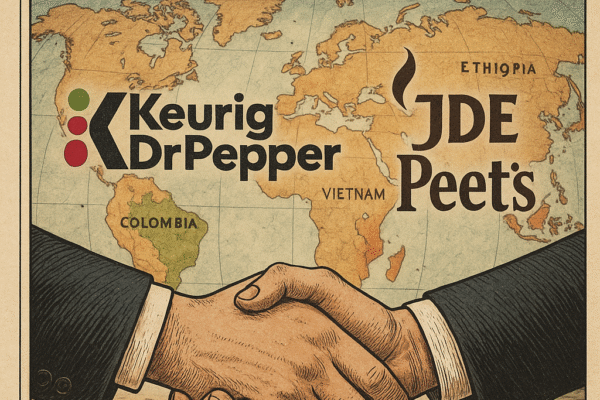The $34.5 billion merger between Charter Communications and Cox Communications represents a tectonic shift in U.S. telecommunications, creating a combined entity that will control 69.5 million broadband passings and 37.6 million customers across 46 states[3][11][13]. This consolidation – the largest cable merger since Charter’s acquisition of Time Warner Cable in 2016 – comes as traditional providers face existential threats from streaming platforms, fixed wireless broadband, and 5G mobile alternatives[10][11]. The new Cox Communications (retaining Charter’s Spectrum consumer brand) will leverage operational synergies, geographic expansion, and enhanced negotiating power to defend its broadband dominance while accelerating mobile growth through Spectrum Mobile’s 10.4 million-line subscriber base[7][13].
Strategic Rationale Behind the Mega-Merger
Synergy Realization and Cost Structure Optimization
The combined entity anticipates $500 million in annual cost savings within three years through network integration, reduced marketing duplication, and operational efficiencies[13][16]. Charter’s existing infrastructure-sharing agreement with Verizon for Spectrum Mobile becomes more economically viable at scale, while Cox’s fiber-rich networks in Sun Belt markets like Phoenix and Las Vegas complement Charter’s Midwest/East Coast concentration[3][7]. The merger also enables workforce consolidation, with plans to repatriate 1,200 overseas customer service jobs to U.S.-based centers – a strategic concession to Trump-era “America First” regulatory priorities[15][16].
Geographic and Demographic Expansion
By combining Charter’s 57 million passings with Cox’s 12.3 million, the new company gains critical mass in adjacent territories – particularly Virginia, Kansas, and Oklahoma – creating contiguous service areas that reduce last-mile infrastructure costs[3][14]. Cox’s strong penetration in affluent suburban markets (median household income $85,000 vs. Charter’s $72,000) provides upside for premium service tiers[5][13]. The expanded footprint also strengthens negotiating leverage with content providers, as the merged company will control 14.4 million pay-TV subscribers versus Comcast’s 12.1 million[4][10].
Product Bundling Innovation
Charter’s “linear-plus-streaming” strategy – which bundles Disney+, Peacock, and Max into traditional cable packages – has already reduced video subscriber losses from 9.5% (2024) to 7.3% (Q1 2025)[10]. Post-merger, this model will extend to Cox’s 3 million video customers, potentially stabilizing the combined pay-TV base at 14.4 million households[5][10]. The companies also plan cross-selling opportunities between Cox’s commercial fiber services (370,000 business clients) and Charter’s SMB-focused Spectrum Business division[15][16].
Market Impact and Competitive Dynamics
Broadband Supremacy Battle
The merger creates America’s largest residential ISP with 35.9 million broadband subscribers, surpassing Comcast’s 32.2 million[11][13]. This scale proves critical as fixed wireless access (FWA) from T-Mobile and Verizon captured 4.1 million broadband customers in 2024 alone[11]. Charter’s aggressive pricing strategy – $49.99/month for 300 Mbps vs. Comcast’s $60 – positions the merged entity to defend market share, particularly in Cox’s Mid-Atlantic strongholds where FWA penetration remains below 15%[7][11].
5G Mobile Convergence
Spectrum Mobile’s Q1 2025 performance – adding 514,000 lines versus T-Mobile’s 487,000 – demonstrates cable’s emerging threat to wireless incumbents[7]. The Cox merger provides 6.3 million new cross-selling targets for Spectrum Mobile’s $29.99/line unlimited plan, which leverages Verizon’s network at 50% lower cost than traditional MVNO agreements[7][16]. Analysts project the combined company could reach 15 million mobile lines by 2026, generating $4.5 billion in annual service revenue[7][13].
Streaming and Content Negotiations
Charter’s 2024 carriage dispute with Disney – which secured free Disney+ subscriptions for Spectrum TV customers – established a blueprint for integrating streaming into legacy bundles[10]. Post-merger, the combined company’s 14.4 million video subscribers grant unprecedented leverage in negotiations with studios: early analyses suggest the new Cox Communications could demand 25-30% higher affiliate fees from Warner Bros. Discovery and Paramount Global compared to standalone Charter[10][16].
Regulatory and Financial Considerations
Antitrust Scrutiny in Trump’s Second Term
Despite limited geographic overlap (12% of passings), the merger faces scrutiny from Trump-appointed FCC Chair Brendan Carr, who has conditioned recent approvals on rollbacks of corporate DEI initiatives[8][11]. Charter’s commitment to repatriate jobs and maintain Spectrum’s $15/hour minimum wage – 107% of the federal mandate – aligns with the administration’s worker-first rhetoric[15][16]. DOJ Antitrust Chief Gail Slater’s focus on labor market effects rather than pure market share calculations improves approval odds, with analysts assigning 85% probability of clearance by Q2 2026[16].
Capital Structure and Shareholder Impact
The $34.5 billion enterprise value deal includes $4 billion cash, $6 billion in convertible preferred units, and assumption of $12.6 billion debt[12][16]. Cox Enterprises will emerge with 23% equity stake, while Charter shareholders face dilution from 58 million new shares issued – a key concern driving 16% post-announcement selloff among hedge funds like Point72 Asia[2][12]. However, Moody’s estimates the combined entity’s leverage ratio will improve to 4.1x EBITDA by 2027, down from Charter’s standalone 4.9x[13][16].
Institutional Investor Reactions
While activist firms like Halper Sadeh investigate potential shareholder unfairness, long-term investors applaud the merger’s strategic rationale: MoffettNathanson upgraded CHTR to “Outperform” with $500 price target (17% upside), citing expanded buyback capacity from $2.1 billion annual free cash flow synergies[2][10]. Vanguard and BlackRock collectively added 4.2 million shares post-announcement, betting on Charter’s mobile/broadband convergence play[2][7].
Operational Integration Challenges
Network Architecture Harmonization
Cox’s DOCSIS 4.0 rollout in Las Vegas and Phoenix conflicts with Charter’s distributed access architecture (DAA) approach, requiring $1.2 billion in node upgrades to ensure 10G service parity[3][15]. The companies plan 18-month transition using Harmonic’s CableOS virtual CMTS platform, which supports both architectures – a move that could delay full integration until 2027[3][11].
Branding and Customer Retention
While consumer services will market as Spectrum, Cox’s strong regional brand equity (Net Promoter Score 62 vs. Charter’s 54) complicates transition plans[5][15]. Charter will retain Cox’s Atlanta campus as “East Coast HQ” and phase in Spectrum pricing over 24 months to minimize churn – a strategy that preserved 92% of Time Warner Cable subscribers post-2016 merger[14][16].
Workforce Cultural Integration
Merging Charter’s performance-driven culture with Cox’s family-owned heritage poses HR challenges: Cox’s 48,000 employees enjoy superior benefits (6% 401k match vs. Charter’s 3%), while Charter’s sales-centric model delivers 18% higher revenue per employee[5][15]. The companies plan hybrid work compromises – 3 days in-office for operations vs. 5 days for sales – to balance productivity and retention[15].
Future Competitive Landscape
Sources
http://mediagazer.com/250516/p4, https://www.marketbeat.com/stocks/NASDAQ/CHTR/news/, https://www.fierce-network.com/broadband/charter-acquiring-cox-345b-what-you-need-know, https://www.sportsbusinessjournal.com/Articles/2024/02/05/charter-spectrum-stock-comcast-cable-tv-subscribers/, https://www.goal.com/en-us/lists/cox-communications-review/blta1b1c15574754d8f, https://tecknexus.com/5gnews-all/charters-bold-streaming-bundle-strategy-to-combat-cord-cutting-in-2025/, https://www.lightreading.com/cable-technology/charter-beats-t-mobile-in-wireless-growth, https://www.commondreams.org/news/charter-cox, https://www.lightreading.com/cable-technology/charter-to-combine-with-cox, https://www.businessinsider.com/charter-cox-merger-pay-tv-cord-cutting-comcast-internet-broadband-2025-5, https://broadbandbreakfast.com/charter-cox-merger-provides-convergence-runway/, https://www.staradvertiser.com/2025/05/16/breaking-news/charter-to-buy-cox-for-21-9-billion-in-mega-cable-deal/, https://www.rcrwireless.com/20250516/uncategorized/charter-cox, https://roughdraftatlanta.com/2025/05/16/charter-cox-merge-34-billion/, https://corporate.charter.com/newsroom/charter-communications-and-cox-communications-announce-definitive-agreement-to-combine-companies, https://www.marketscreener.com/quote/stock/CHARTER-COMMUNICATIONS-IN-27738754/news/Charter-Communications-to-merge-with-Cox-in-mega-cable-deal-49978007/





